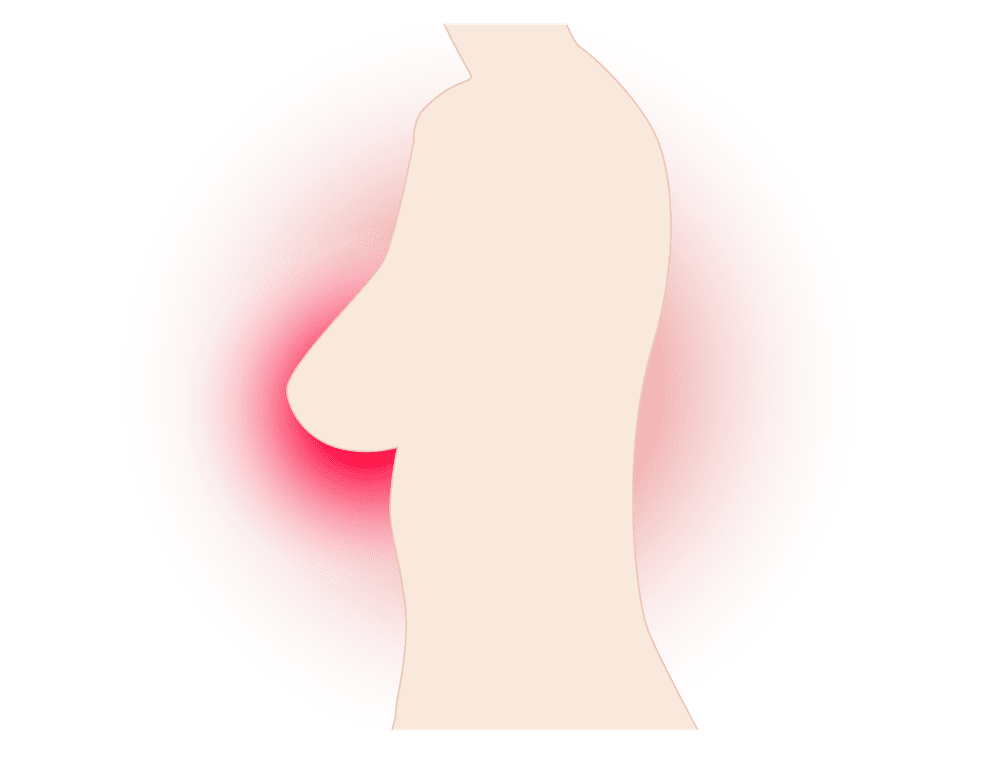When Pamelia J. first realized that her breasts were growing in size, she was kind of excited about it. Pamelia already had large breasts (a J-cup) but really felt as though the larger size would enhance her body. Even though she quickly outgrew her favorite bra, Pamelia describes her initial experience as “fun and interesting.” But soon, as her breasts continued to grow, she realized that something might be wrong. According to a story in the New York Post, Pamelia’s breasts grew to an M-cup over the span of just eight months. Her chest measurements expanded from 39 to 51 inches. Pamelia soon pursued medical attention to determine if there might be an underlying cause. After a surgical referral in March 2022, Pamelia finally received a diagnosis: gigantomastia.
Unfortunately, the rapid and extensive breast growth has left Pamelia with a number of associated health issues. She wonders if there is any relationship between gigantomastia and polycystic ovary syndrome, which Pamelia has also been diagnosed with. Her large breasts are heavy and painful. The pain often radiates to her back, causing severe and sometimes debilitating discomfort. There is also an associated mental struggle that comes along with her condition. Pamelia sometimes feels uncomfortable by the judgments she receives in public. It can also be difficult to find clothing that fits over her breasts, which can draw additional looks and judgment.
Moving forward, Pamelia hopes to undergo breast reduction surgery to relieve some of her back pain and to give herself, overall, a better life. In the meantime, she is committed to raising gigantomastia awareness throughout the public. On her TikTok page, Pamelia shares information on gigantomastia, breast reductions, and self-image. She hopes that this will inspire others to learn and that she can provide a more nuanced understanding of living with a rare condition.
What is Gigantomastia?
The Cleveland Clinic describes gigantomastia, or breast hypertrophy, as:
a rare condition that involves developing extremely large breasts due to excessive breast tissue growth. Gigantomastia is characterized by breasts that have an excess of at least 5 pounds of breast tissue [and] extra breast tissue that equals more than 3% of your total body weight.
Healthcare providers (HCPs) split gigantomastia into four subtypes: juvenile (occurring during puberty), gestational (occurring during pregnancy), drug-induced, and idiopathic (of unknown cause). The idiopathic form is the most common type of gigantomastia. Some hypothesized causes of gigantomastia include hormonal changes, autoimmune conditions, extreme obesity, and genetics. Only around 300 cases of this condition have been reported.
Symptoms related to gigantomastia can include:
- Poor posture
- Loss of feeling in the nipples
- Painful or itchy skin indentations from bra straps
- Neck, back, and breast pain
- Infections or abcesses
- Redness, warmth, or itchiness under the breasts
Treatment options can vary. Potential treatments include medications like tamoxifen, medroxyprogesterone, danazol, and bomocriptine; breast reduction surgery; or a mastectomy in severe or recurrent cases.





